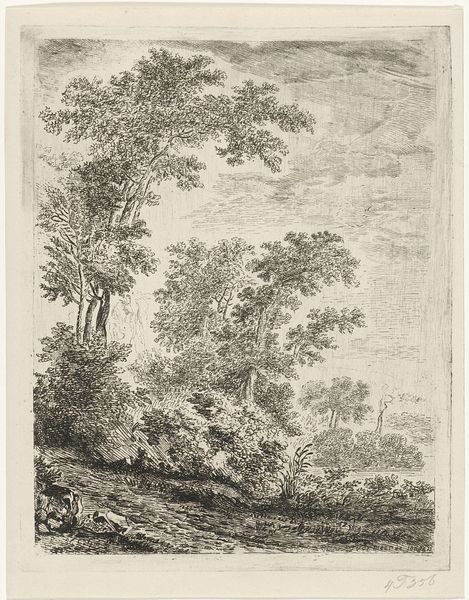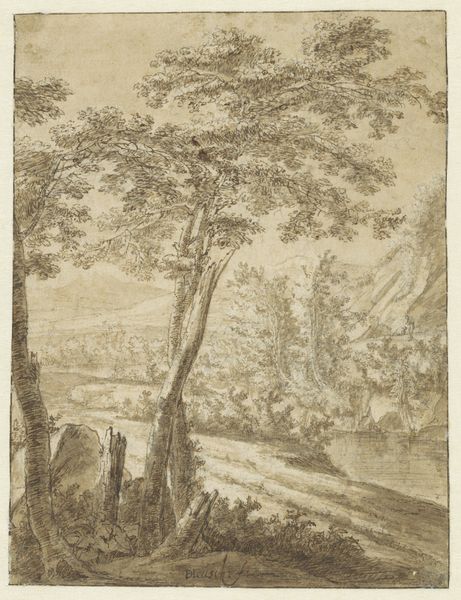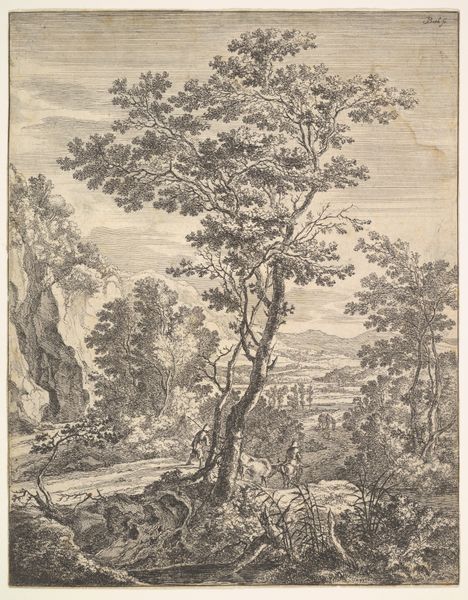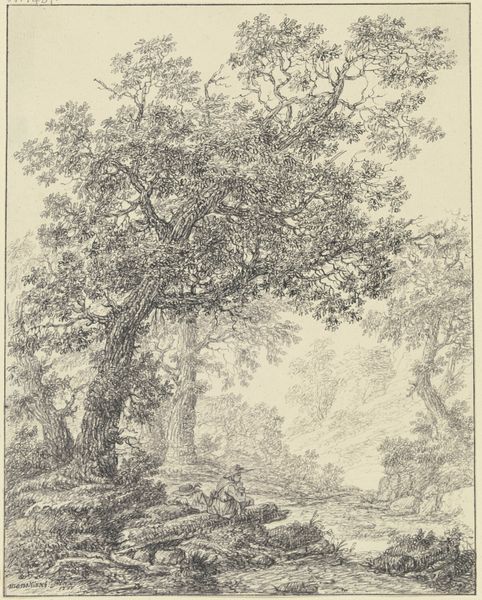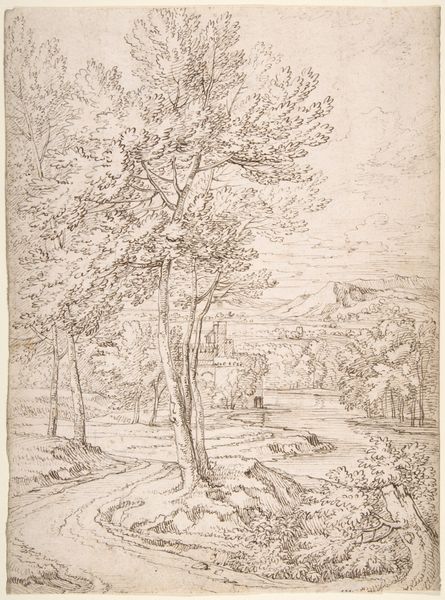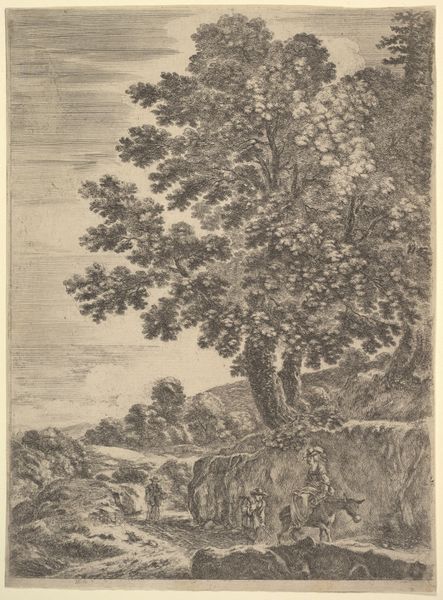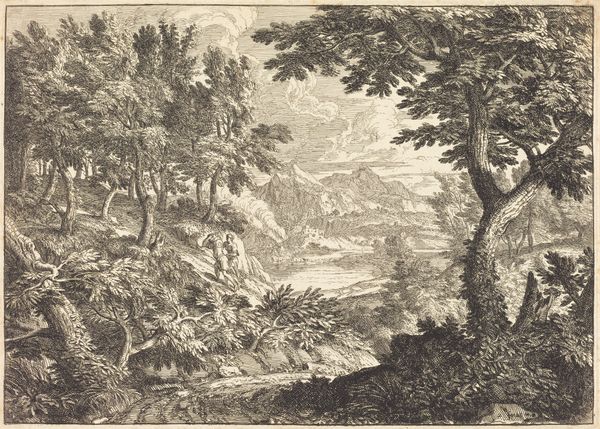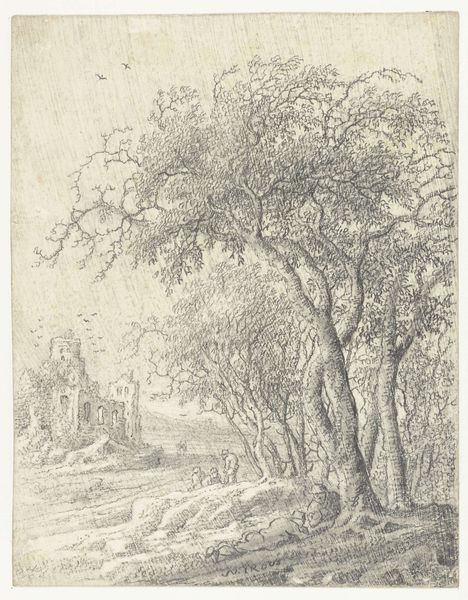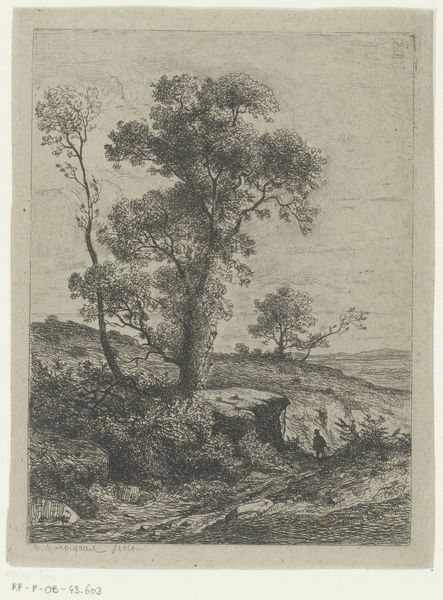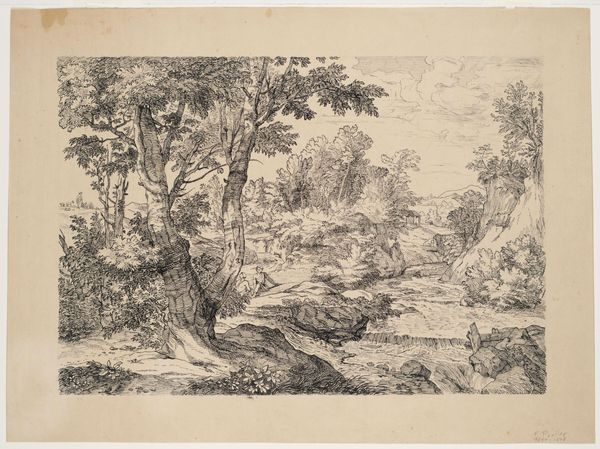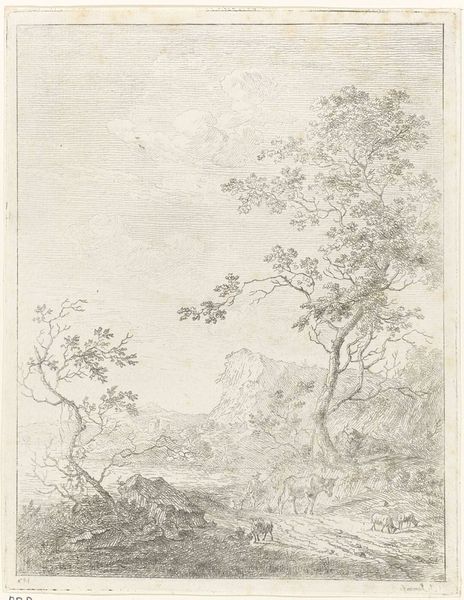
drawing, etching, paper, ink
#
drawing
#
ink drawing
#
pen drawing
#
dutch-golden-age
#
pen sketch
#
etching
#
landscape
#
paper
#
ink
#
line
#
pen work
Dimensions: height 261 mm, width 205 mm
Copyright: Rijks Museum: Open Domain
Curator: Immediately, the intricate linework and the towering presence of the central tree really strike me. It’s so detailed and almost feels like an embrace of the natural world through close observation. Editor: Indeed, there's a pastoral calmness that pervades "Landscape with a Large Tree" by Jan Both, made between 1644 and 1652. Housed here at the Rijksmuseum, this etching demonstrates a powerful understanding of landscape, but I am more concerned about the role landscape played in visualizing property, class and the emergence of a certain political status. Curator: Interesting point, but focusing on materiality for a moment: note how the artist meticulously crafts varied textures using simple pen and ink. The cross-hatching creates depth, making the tree’s bark feel rough, almost tangible. There's also labor here in using humble material for high impact art, shifting values and how the creative project took place. Editor: I agree. The landscape genre was undergoing a fascinating shift in the 17th century. Artists were less focused on Biblical or mythological scenes; the everyday world around them becomes worthy of artistic scrutiny. Land became this arena through which societal narratives played out, and control was projected through visual means. Notice the figures on the path. Are they laborers or leisurely travelers, defining our own use and definition of place? Curator: Well, considering Both’s origins—the son of a glass painter and trained within that workshop setting—he's keenly aware of materials and reproduction, using techniques typically seen in craft and applied to so called 'fine art' like drawing. We see the confluence of printmaking's growing ubiquity and broader accessibility which in turn facilitated knowledge sharing of nature during an age of expanding global exploration. Editor: That’s right, but I argue it also subtly reinforces existing power dynamics. This idealised rural scene might not entirely mirror lived realities for the vast majority but does highlight an elite class. Curator: Possibly, but the simple appreciation of the artisanship on display also offers value and insight, don't you think? Editor: I do, but in this instance, to reflect critically on art like this demands questioning whose narratives take center stage in both production and interpretation. Curator: Food for thought. The interplay between natural beauty and crafted artifice definitely opens avenues to ponder the era's cultural values. Editor: Precisely! I trust we will both take that into consideration in our own subsequent explorations.
Comments
No comments
Be the first to comment and join the conversation on the ultimate creative platform.
